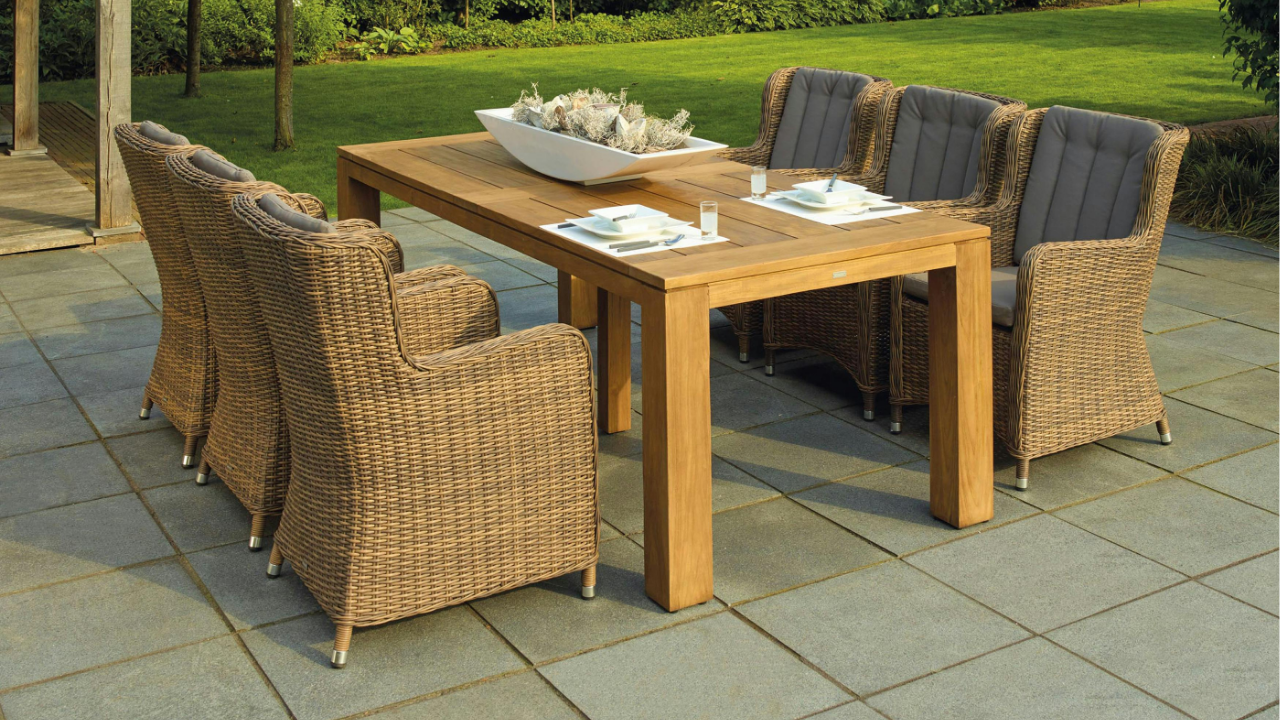
Limestone is a timeless natural stone prized for its soft beauty and subtle elegance. Its warm, neutral tones and gently aged character make it an ideal choice for both traditional and contemporary architectural settings.
From garden walls to fireplace surrounds, limestone brings a sense of calm and refined simplicity to any space. Because of its versatility and organic appeal, it remains a popular material in both indoor and outdoor designs.
Let’s take a closer look at what makes limestone such a valued stone in Australian homes and landscapes.
What Is Limestone?
Limestone is a sedimentary rock mainly made of calcium carbonate from marine life like coral and shells. It forms over millions of years through the accumulation and compression of these materials in shallow seas. Often containing fossils, limestone has natural charm and character. Its gentle tones and varied textures make it suitable for many architectural applications, both indoors and in the landscape.
Key Characteristics of Limestone
Limestone offers a timeless, organic appeal that suits both contemporary and traditional architecture. Below are its defining features that make it a standout natural stone for design and construction.
1. Soft, Neutral Colour Palette
Limestone offers tones such as cream, beige, white, and soft greys. These colours suit a wide range of settings, adding brightness and harmony to both indoor designs and exterior facades.
2. Naturally Cool Underfoot
Thanks to its natural composition, limestone stays comfortably cool even in direct sunlight. This makes it an ideal surface for courtyards, pool surrounds, and outdoor entertaining areas in warmer climates.
3. Versatile Surface Finishes
Limestone can be finished in multiple ways, including honed, sawn, and tumbled. These surface options allow for visual flexibility while adding subtle texture and enhancing the stone’s natural appeal.
4. Softer Yet Durable
Although softer than granite or bluestone, limestone remains strong and long-lasting when properly sealed. It can also be shaped with precision, making it suitable for intricate walling and architectural detailing.
5. Ages Gracefully Over Time
As limestone weathers, it develops a soft patina that enhances its natural charm. This mellow ageing process adds timeless beauty and contributes to a well-worn, elegant aesthetic in any space.
Limestone Varieties and Surface Finishes
Limestone varieties and finishes offer versatility and elegance, making them a standout choice for both walling and paving in Australian homes. Here’s how they differ.
- Jamieson Limestone: Cool toned with hints of grey and beige, this stone features subtle fossil markings. Its natural split surface is ideal for refined walling projects.
- Beloka Limestone: Soft golden hues and a rustic finish make Beloka ideal for heritage facades or garden walls, especially in tumbled or natural split formats.
- Barwon Limestone: Pale and lightly speckled, Barwon limestone adds brightness to facades. It’s typically applied in sawn or honed finishes for elegant walling.
- Jasper Limestone: Cream to honey tones with veining make Jasper limestone perfect for bold walls. Available in sawn or tumbled finishes to enhance its texture.
- Marrakesh Limestone: Sandy beige and brown tones with a patina-like effect suit Mediterranean or rustic walls. Split or tumbled finishes elevate its character.
- Grange Limestone: Dense, cool grey with dramatic movement. The natural split finish showcases raw appeal for fireplaces or architectural feature walls.
- Luxe Limestone: Light-toned with fine graining. The sawn finish adds modern sophistication for sleek interior or exterior walling.
- Stamford Limestone: Classic creamy beige paver with subtle texture. Sawn and honed finishes make it perfect for elegant courtyards and verandahs.
- Himalayan Limestone: Charcoal tones with soft movement. Flamed or brushed finishes are popular for poolside paving and outdoor designs.
- Tuscan Limestone: Golden hues and natural grain suit Mediterranean-style paths. Tumbled finishes enrich its rustic look.
- Selene Limestone: Pale silver-grey with a smooth texture. Sawn or honed for clean, open-air paving styles.
- Berkshire Limestone: Light greys and creams in a muted blend. Sawn finish fits minimalist or Scandinavian paving.
- Brooklyn Limestone: Mid-toned grey with warmth. Available in honed or brushed, suited for both modern and classic settings.
- Sienna Limestone: Earthy browns and amber tones. Sawn or tumbled surfaces bring charm to garden paving.
Where Limestone Shines in Modern Design
Limestone enhances Australian spaces with subtle charm and versatility. Here’s how this natural stone is used to add structure, warmth, and lasting beauty to homes and landscapes.
1. Paving with Limestone
Limestone pavers offer a refined, timeless look with natural cooling properties. Their soft tones and smooth textures are perfect for courtyards, verandahs, and pool areas, adding elegance and comfort to outdoor spaces.
2. Walling with Limestone
Limestone walling brings warmth and organic texture to facades and garden features. The subtle colour variations and surface finishes create visually rich backgrounds that suit both heritage and modern Australian architectural styles.
3. Stair Treads and Steppers
Limestone is ideal for creating safe and stylish transitions with stair treads and steppers. It offers visual continuity, a non-glare surface, and clean lines that elevate both garden paths and entryways.
4. Fireplace Surrounds
Limestone’s soft hues and detailed finishes make it a favourite for fireplace surrounds. Whether sleek or rustic, it frames the hearth with a calming, natural appeal that suits both traditional and contemporary interiors.
5. Indoor Flooring
With its cool touch and muted tones, limestone flooring is perfect for kitchens, hallways, and open-plan spaces. It helps brighten rooms naturally while offering a seamless, tactile connection underfoot.
Benefits of Choosing Limestone for Home and Landscape
Limestone offers a balance of natural beauty and practical performance. Here’s how it enhances both outdoor and indoor spaces.
1. Brings Timeless Natural Beauty
Limestone’s soft tones and textures deliver a refined, organic appearance that enhances both classic and modern designs. It creates inviting spaces with a grounded, elegant feel across interiors and landscapes.
2. Feels Comfortable Underfoot
This stone stays cool in the heat, offering comfort beneath bare feet. Ideal for pool edges, alfresco zones, and patios, limestone makes outdoor areas more liveable throughout warm seasons.
3. Works Across Many Designs
From neutral shades to unique cuts and finishes, limestone suits a wide range of architectural styles. It’s equally at home in heritage homes, minimalist settings, or Mediterranean-inspired landscapes.
4. Gains Character Over Time
Limestone develops a gentle patina with age, adding visual depth and charm. This evolving look gives your spaces a naturally weathered, enduring feel that grows more appealing with time.
5. Allows for Easy Customisation
Limestone’s softer structure makes it easier to cut, shape, and finish. This versatility allows for design creativity in curved walls, patterned paving, or intricate façade detailing.
6. Supports Sustainable Design
Locally quarried limestone offers a lower-carbon footprint. Its longevity and minimal processing make it a more environmentally friendly option for long-lasting walling or paving installations.
Maintenance and Care for Limestone
Limestone performs best with the right care. These simple steps help protect its beauty and extend its lifespan:
- Seal on installation: Apply a high-quality penetrating sealer to reduce porosity and guard against moisture, stains, and dirt.
- Clean regularly: Sweep surfaces often and rinse with clean water. Use a pH-neutral cleaner suitable for natural stone.
- Avoid harsh chemicals: Stay away from acidic or abrasive cleaners that can damage the surface or cause etching.
- Re-seal as needed: Depending on traffic and exposure, reapply sealer every 2–3 years to maintain protection and finish.
- Blot spills quickly: Treat spills early to prevent staining, especially from oils, food, or tannins like wine and coffee.
- Check for wear: Inspect edges and joints occasionally. Replace or repair any damaged or chipped pieces to maintain a seamless look.
- Protect high-traffic areas: Use mats or rugs in busy zones to reduce wear and tear on interior limestone flooring.
Conclusion
Limestone brings timeless warmth and natural elegance to any space, whether used for paving or statement walls. Its soft tones and adaptable finishes suit a variety of architectural styles.
For expert advice and premium-grade limestone tailored to your project, speak with the team at Splendour in Stone. We’re here to help you build with confidence and lasting beauty.
More To Explore

Top 10 DIY Projects to Upgrade Your Backyard
More homeowners are paying attention to their outdoor spaces as backyards become important living areas. This shift highlights a desire for comfort, better use of

What Are the Best Permeable Pavers for Drainage?
Heavy rain can quickly turn a beautiful outdoor space into a frustrating pool of standing water. Many homes face similar drainage issues, especially in high-traffic


